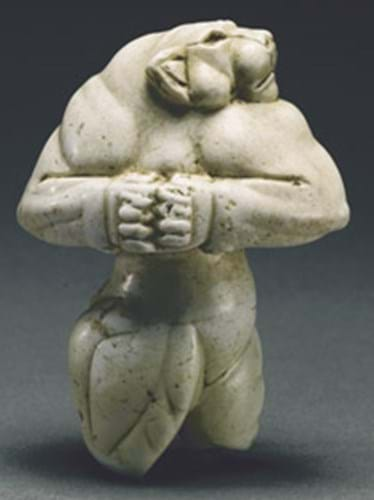
In a world where contemporary has been king, this tiny stone carving of a standing lioness made in Mesopotamia 5000 years ago, struck a blow for ancient art when it sold amidst a round of applause for a staggering $51m (£25.9m) plus premium at Sotheby's New York last week.
The price leaves far behind the $25m paid for a Roman bronze statue of Artemis and the Stag last June and the $26m paid in November for Pablo Picasso's bronze bust of Dora Maar, both also offered in the same rooms.
Despite its tiny size, the anthropomorphised animal carving is remarkable for the quality and expressiveness of the carved detail.
It was always expected to be the highlight of Sotheby's December 5 sale of antiquities, its importance and quality underscored by a pre-sale estimate of $14m-18m, but no-one could have predicted it would raise the sum it did.
Five bidders contested it on the day: three on the phone and two in the room.
The successful purchaser, a man at the back of the room who would only identify himself as English, did not join the bidding until it reached $27m, after which he battled it out with a telephone underbidder.
The powerfully conceived statuette comes from the Guennol collection of works of art formed by Edith and Alastair Bradley Martin. Thought to have been found in a site near Baghdad, it was acquired in 1931 by the New York dealer Joseph Brummer who sold it to the Martins.
For over half a century, this celebrated piece, which has been extensively published, has been on loan to the Brooklyn Museum of Art of which Mr Martin was a trustee.
When Sotheby's announced they were to sell the Guennol lioness their head of Antiquities, Mr Keresey, predicted: "The successful bidder in the December auction will have the distinction of owning one of the oldest, rarest and most beautiful works of art from the ancient world."
Now that the gavel has fallen, he also has the distinction of owning the most expensive.
By Anne Crane




